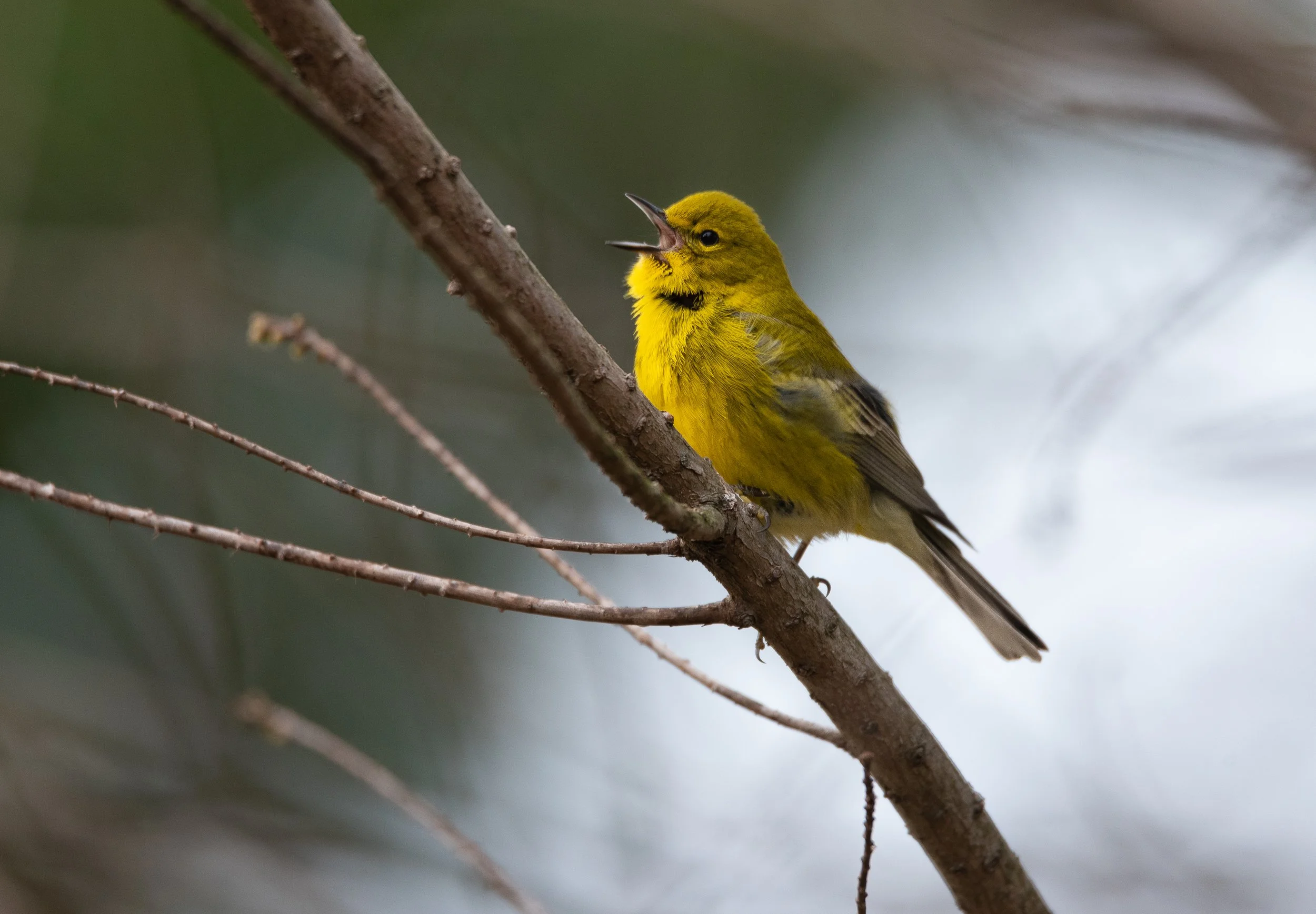With the beginning of spring just a few weeks away, some of you may have noticed birds beginning to sing. During the warmer days of the past few weeks, I have heard Tufted Titmice and Carolina Chickadees beginning to sing. You may be thinking to yourself, I hear those bird sounds YEAR ROUND, what is he talking about? Today, that is going to be our topic of discussion.
Song vs. Call
Did you know that there is actually a difference between bird “songs” and bird “calls?” Bird songs can be quite elaborate and vary greatly between different species. Some species, such as Mockingbirds, Blue Jays, and European Starlings are able to learn and mimic the calls of other birds. For arguably one of the most impressive bird songs, let’s look to our namesake, the Wood Thrush. It may seem like an odd choice to name our shop after a bird that many people have never seen or even heard of, (and the reason that we get monthly calls from people asking if we can refinish their dining room sets) but if you ever are fortunate enough to HEAR their song, it would make a lot more sense. For those of you who have never heard one singing, I will link to it here. Thanks to its Y-shaped syrinx, or voice box, a careful internal balancing act with its airways, and millennia of evolution, it is actually capable of harmonizing with itself. That’s right; our namesake can sing a simultaneous duet, with itself!
To put it simply, birds (usually males) use song as a means of attracting a mate and establishing/defending their territory. Bird calls, while melodically more simple, can often have more meanings. They typically fall into four categories: Contact, flight, alarm, and begging.
Contact calls are made by birds as a way of keeping in communication with one another while foraging for food. Generally speaking, these are fairly short, simple, and not designed to carry far. However, if a bird gets separated, it may produce a louder, more urgent call to broadcast its position to others.
Flight calls serve a similar purpose. If you have ever seen flock of Canada Geese, Sandhill Cranes, Robins, or Common Grackles flying overheard, you have likely noticed that they can be quite noisy. This is flight calling in action. This serves to help a group maintain contact with one another whilst airborne.
Birds also have alarm calls to help alert one another to threats, such as birds of prey, snakes, or cats. Certain birds, such as Chickadees will use different calls for different threats. According to the National Audubon Society, for aerial dangers they will utter a sharp, quick seet. If the bird of prey is perched and deemed to be less of an immediate threat, they will call out chick-a-dee with added dee’s on the end to indicate greater urgency.
Lastly, we have the begging calls. These simplistic calls are a far cry from the complex songs of the adult males or even the interesting meanings of mature bird’s alarm calls. These are simply the young birds trying to attract the attention of their parents

